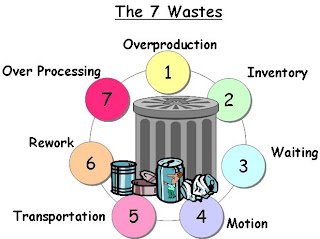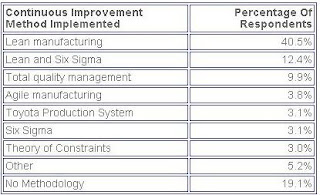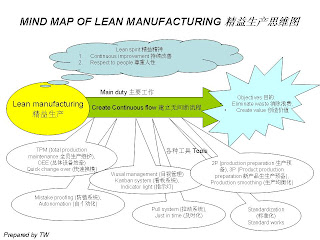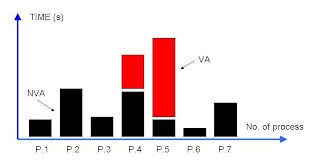1. "One piece flow", explained in my last post, continuous flow is the process flow in a most cost-effective flow. It depends on what is quantity is the reasonable and efficient in running the process. The quantity also can be changed in the processes. During the improvement, we are encouraged to invest new equipment, in other words, we should use the existing equipment to re-design a new process. "One piece flow" is not always can be achieved but make the process flow smooth and continuous is much easiler. Therefore, once you started to setup a continuous flow, do not constrain by the flowing quantity. Just make the flow as smooth as you can. No concept can suit for every industry, but after your analysis and adjustment.
2. "False continuous flow", the concept of continuous flow or single piece flow, we are always encourage to re-layout the processes in U shape or L-shape. I would like to explain the concept here, both U-shape and L-shape layout can easily assign a operator to handle more than one processes. For U-shape layout, the start point and end-point are in the same location, it is good in feedback of non-conformance. The false flow is meaning that they just put the processes in the U or L-shape layout but without any concept of tact time. All the WIP still stored in the process in same quantity and the flow was still flowing in station by station. The only difference is the layout of process are much close together and in the suggested shape. The flow looks like improved but actually is not continuous and smooth. I called it false continuous flow.
3. The concept of continuous flow looks simple, but it is almost using all the concepts in lean manufacturing, such as mistake proofing, pull system (Kanban system), TPM. Actually, you will find that it is very hard to implement because once you change the layout, all the problems will come out, such as the material issue, quality issue and process issue, The situation forms a extreme high pressure for improvement leader. Sometime, they are forced to go back for old process flow due to the pressure of delivery. Eventually, the implement project may be idle or delay, the situation is caused by lack of preparation and analysis before improvement actions.
Therefore, before implement the changes, we should well analysis the overall effectiveness of re-design, even, we need to prepare enough inventory of finished goods for line stop. Avoiding the situation, I suggest to implement the changes step by step. That's meant we only improve portion of processes in overall flow, seperate the improvement action in different phases to prevent disaster on your way to go.
Finally, setup a continuous flow is absolutely not a simple job. You need to fully understand all the concepts of lean manufacturing to support the actions. It is combination of all lean concepts and is the most critical factor of success.































